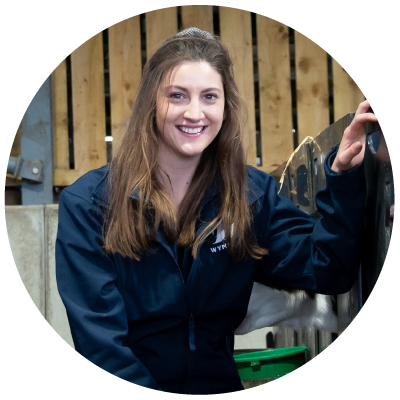In recent years there has been a significant push to calve heifers younger to become more efficient. The benefits of this have been well documented including significantly reducing rearing costs, which account as one of the largest costs on farm.
With ever-increasing costs of rearing, it can be tempting to push heifers to calve down younger than ever. However, to maximise the return on these heifers, it is important to improve the longevity of these animals. Improve herd longevity will reduce the need for as many replacement heifers, allowing for more selective herd breeding, herd growth and increased calf sales, both beef and or heifer sales.
To achieve this, it is important to ensure we know how heifers are performing throughout the rearing period. It is far too common to be serving heifers ‘when they look about right’, but maybe we should be looking for a more precise approach. The implications of calving heifers too young or too light can have substantial implications on heifer performance and longevity, with the risk of:
Dystocia
Dystocia can have a significant impact upon the health and productivity of heifers. Younger calving heifers are at high risk of dystocia due to being smaller and less developed e.g smaller pelvic area and birth canal. This can lead to caesareans and increased vet and med costs, increasing overall costs and even heifer death. Studies have found cases of dystocia can reduce conception to first service by up to 12%, impacting reproductive performance and efficiencies. Additionally, dystocia leads to higher calf mortality and morbidity.
Milk Production
Studies have found a significant correlation between body weight and first lactation yield. Heifers which have a higher body weight at calving are likely to produce more milk in the first lactation. However, there is a fine line between optimum and excess. Heifers in excess body weight are likely to see impacted yields.
Bodyweight targets:
Younger calving heifers are likely to see lower yields in comparison to heifers calving <24 months. The decreased milk yield is likely to be due to the energy demand for growth over milk yield production. It is important to remember that heifers do not reach their mature bodyweight until around second calving.
Fertility
It is important to remember that heifers are still growing. Heifers that are younger and lighter will prioritise energy for growth over fertility. This often leads to heifers requiring more services for conception. To optimise performance and efficiency, cows should calve down every 365 days. Therefore, making sure that animals are getting back in calf as soon as possible will help optimise.
How to achieve:
Growth Rates
To calve down between the optimum 23-25 months old, heifers should grow at an overall average rate of 0.7- 0.8kg/ day throughout the entire growing period. Heifers that achieve growth rates above this or below this are likely to have implications.
Heifers growing more than this are at increased risk of laying down too much fat, leading to increased body condition scores at calving, which in turn can lead to increased risk of dystocia, metabolic diseases and reduced fertility. Additionally, these heifers can often see lower milk yields. Heifers growing less than this can also face implications such as fertility, lameness and performance reduced.
| Age | Larger Weight (Based on a Holstein Friesian) | Target Mature Body Weight % | Target Mature Height % |
|
Birth |
41kg | 6% | |
| Post-weaning (3 months) | 116kg | 17% | 63% |
| 6 Months | 185kg | 27% | 74% |
| Puberty (9 months) | 274kg | 40% | 78% |
| 12 months | 343kg | 50% | 82% |
| Breeding (14 months) | 377kg | 55% | 87% |
| 1st calving (24 months) | 582kg | 85% | 96% |
Monitor BCS
Ensure that heifers are in good body condition at calving. Ensure heifers calve down around 3 – 3.25.
Read more: Dairy Body Condition Scoring: a key management tool
Take home message:
- Balancing weight, age and size will produce more productive heifers, which will last longer in the herd.
- Calculate your herd mature bodyweight to set herd targets accordingly
- Monitor heifer growth rates
- Consider heifer BCS










